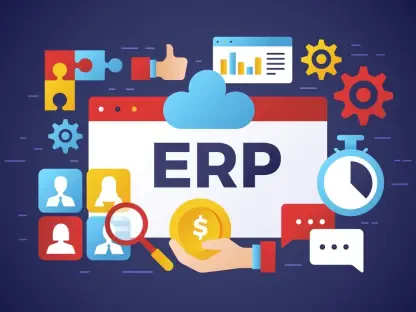I’m thrilled to sit down with Vijay Raina, a renowned expert in enterprise SaaS technology and software design. With his deep knowledge of tools like Oracle NetSuite and his thought leadership in software architecture, Vijay is the perfect person to guide us through the latest innovations in financial software solutions for subscription-based businesses. Today, we’ll dive into the exciting world of AI-driven metrics, exploring how these tools are transforming the way SaaS companies manage growth, streamline operations, and make data-backed decisions.
Can you share what prompted the development of new AI-driven tools like NetSuite Subscription Metrics for SaaS businesses?
Absolutely. The inspiration behind tools like NetSuite Subscription Metrics comes from the unique challenges SaaS and subscription-based businesses face. Many of these companies, especially smaller ones, struggle with tracking recurring revenue and understanding customer behavior in real time. Without clear visibility, it’s tough to make informed decisions. The need for AI-driven insights emerged as a way to cut through the noise of complex data, providing actionable information that CFOs and business leaders can use to drive growth. It’s really about meeting the demand for speed and accuracy in a fast-paced industry.
How does a solution like Subscription Metrics help businesses manage their recurring revenue models?
Subscription Metrics is a game-changer for businesses, particularly small and midsize ones. It brings together financial data—like revenue and churn—with customer data into a single, easy-to-read dashboard. This unified view means you’re not piecing together reports from multiple sources. It simplifies tracking performance over time and helps business owners spot trends or issues quickly, whether it’s a dip in renewals or an uptick in revenue. Essentially, it gives them a clear picture of where their business stands without the headache of manual data crunching.
What are some of the critical metrics this tool focuses on, and why do they matter to SaaS companies?
The tool tracks key SaaS metrics like Monthly Recurring Revenue (MRR), Annual Recurring Revenue (ARR), Net Revenue Retention (NRR), and Customer Lifetime Value (LTV). These are vital because they directly reflect a company’s financial health and growth potential. For instance, MRR shows the predictable income stream, which is the lifeblood of any subscription business. LTV helps understand how much a customer is worth over time, guiding decisions on marketing spend or customer support. Tracking these gives leaders a solid foundation to measure success and plan strategically.
In what ways does the AI component elevate the user experience with Subscription Metrics?
The AI component takes this tool to the next level by offering narrative summaries and insights that go beyond raw numbers. It analyzes data and explains what’s happening—like why churn might be up or retention down—in plain language. Imagine a CFO getting a quick summary that highlights a specific trend and suggests focus areas, all without needing to dig through spreadsheets. It’s presented in a way that’s digestible, often with visuals, making it easier to share with stakeholders or use in board meetings. It’s like having a data analyst on call 24/7.
How does this tool simplify operations for small businesses compared to older, traditional methods?
For small businesses, the biggest win is automation. Traditionally, managing subscription data meant pulling information from different systems, reconciling it manually, and hoping you didn’t miss anything. Subscription Metrics eliminates that grunt work by integrating everything into one platform. This cuts down on errors—like miscalculating revenue—and saves hours of time for finance teams. They can focus on strategy rather than data entry, which is huge for resource-strapped businesses.
Can you explain the cohort analysis heatmap feature and how it benefits decision-making?
The cohort analysis heatmap is a powerful visual tool that breaks down customer retention and lifetime value based on when customers signed up. It helps businesses see patterns—like whether customers from six months ago are sticking around longer than newer ones. This kind of insight is critical for spotting retention trends and understanding what’s working or not. Visualizing this data makes it easier to decide where to double down, whether it’s improving onboarding for new users or re-engaging older cohorts.
What is roll-forward reporting, and how does it help businesses understand their revenue trends?
Roll-forward reporting tracks how recurring revenue changes over time, showing the specific factors driving growth or declines. It’s like a financial storyline—did a big contract renewal boost numbers, or did cancellations drag them down? This feature lays it out clearly, so businesses can pinpoint what’s impacting their bottom line. For example, if a SaaS company sees a drop, they might discover it’s tied to a specific product tier and adjust pricing or marketing accordingly. It’s all about connecting the dots.
How does this solution support companies with operations in multiple countries?
For businesses expanding globally, managing metrics across regions can be a nightmare due to different currencies and reporting standards. Subscription Metrics, especially when paired with NetSuite OneWorld, standardizes all of that. It provides a consistent view of performance no matter where your subsidiaries are, which is crucial for small businesses stepping into international markets. This means a CFO can compare revenue or churn rates across regions without worrying about mismatched data, making global strategy much smoother.
What can you tell us about the integration with AI Connector Services and its impact on data analysis?
The AI Connector Service integration is a fantastic addition because it lets users plug in their preferred AI models for deeper analysis right within the NetSuite environment. This means finance teams can ask questions in natural language, create custom visualizations, or even get recommendations on next steps. For a small business without a dedicated data team, this is like having an extra set of expert hands. It speeds up everything from quarterly reports to spotting early warning signs in customer data, making analysis more accessible and actionable.
What’s your forecast for the future of AI-driven tools in the SaaS and financial software space?
I think we’re just scratching the surface with AI-driven tools in this space. Over the next few years, I expect these solutions to become even more intuitive, predicting not just trends but specific actions businesses should take—almost like a virtual strategist. We’ll see tighter integrations with other operational tools, creating a seamless ecosystem for decision-making. For SaaS companies, this means faster scaling with less guesswork. The focus will likely shift toward personalization, where AI tailors insights to a company’s unique model or industry, making these tools indispensable for growth.









